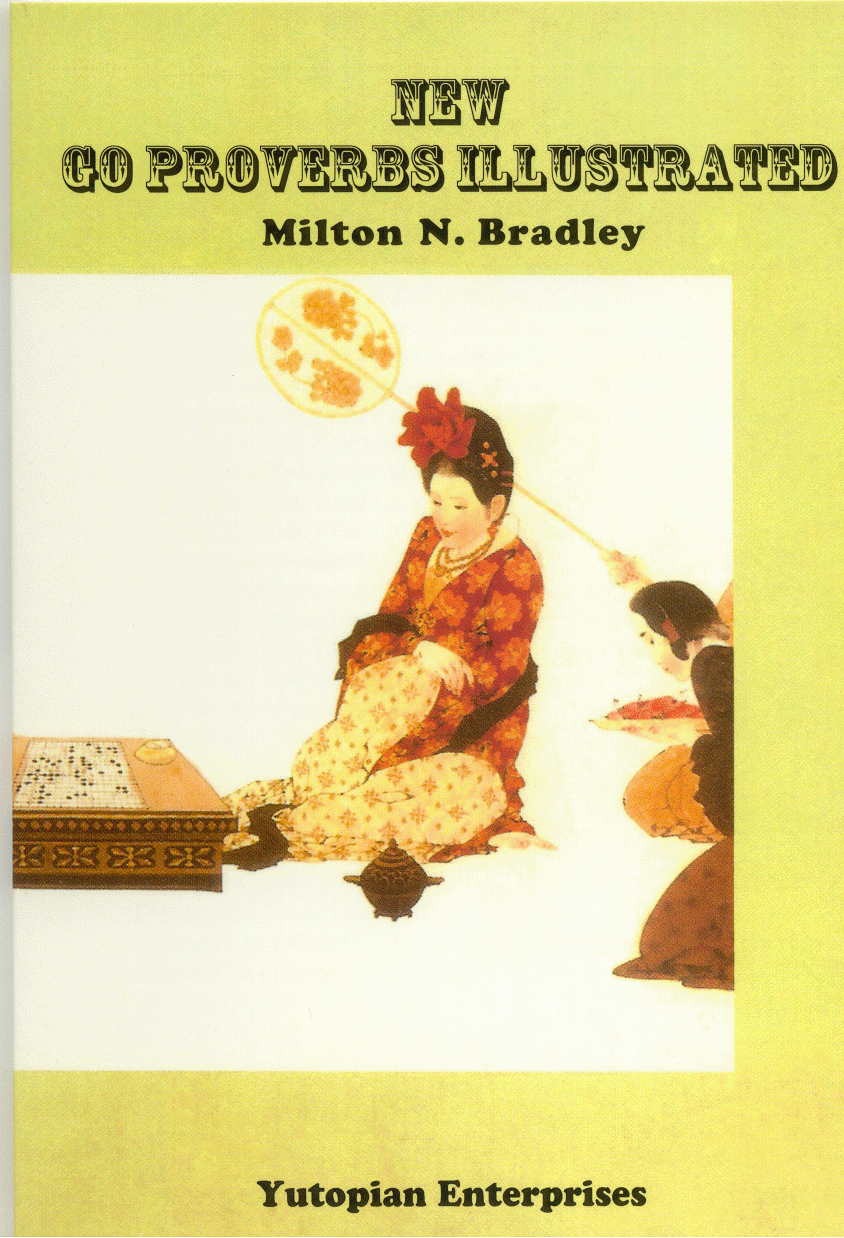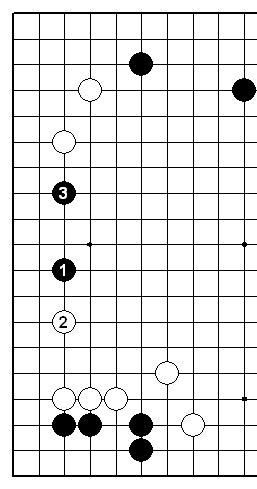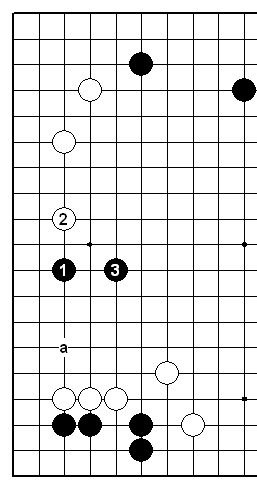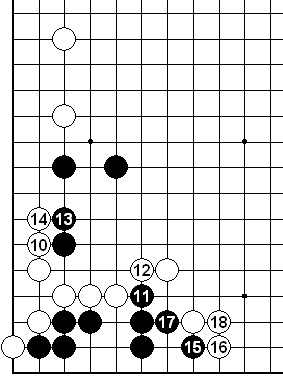

Introduction From "New Go Proverbs Illustrated"
© 2006, 2009 Milton N. Bradley
Introduction
This book provides a logical continuation of Kensaku Segoe’s 1960 classic “Go Proverbs Illustrated”, David Mitchell’s 1980 “Go Proverbs”, and the Nihon Ki-in’s “Handbook Of Proverbs”, translated from the original Japanese and edited by Max Golem in 1998. Segoe set the standard with his ground breaking exposition of 42 proverbs covering a diverse range of basic Tesuji for making shape, connecting, eyemaking/killing, attack/defense/, etc. Mitchell’s 24 proverbs added more Tesuji plus a few important strategic ideas, and the Nihon Ki-In’s compendium of 151 proverbs largely completed the catalog of essential Tesuji.
Given the scope and number of proverbs included in these excellent earlier efforts it would seem that there couldn’t be much room for further exploration of this genre, but on close examination that rather surprisingly proved not to be so. This book contains 25 proverbs, 13 of which are not only completely new but are also primarily focused on key strategic concepts that experience has shown to be especially vital to the Kyu player’s understanding and advancement. As a result, it’s my belief that mere exposure to these key ideas will enable readers at almost every Kyu level to achieve the fastest possible increase in playing strength.
Except for standard Joseki sequences and a few examples in which professionals participated, all of the illustrative material in this book was taken from games contested by strong amateur Dan Go players.
I hereby gratefully acknowledge the valuable contributions of my vetters, Eva Casey, Alan Wadja, Dr. Fumitaka Hayashi, Joanne Phipps, Dr. Masaaki Hamaguchi, and my son Randall Bradley, all of whose incisive comments, suggestions, and sharp eyed spotting of errors have greatly improved and refined this book’s presentation. But above all, special thanks are due to Bill Cobb, whose sparse but very incisive comments have been of invaluable assistance in sharpening the book’s clarity and focus.
Except for a few changes resulting from vetter’s comments, the book’s design, selection of topics included, illustrative materials chosen, and analyses provided are all mine, so I am solely responsible for both its strengths and weaknesses. Milt Bradley June 2005
Sample Chapter From "New Go Proverbs Illustrated"
© 2005 Milton N. Bradley
Proverb 16 - Use Thickness For Attack, Not Territory
One of the most common results of a Joseki is that one side gets territory in return for the opponent’s thickness.
In order that this tradeoff be fair, it’s ultimately necessary that the thickness be converted into an amount of territory at least equivalent to what the opponent has already acquired.
But this conversion should not, need not be, and in fact only rarely is, immediate!
Instead, strong, efficient play usually requires that it be deferred!
That’s because the real value of thickness is as a fighting weapon, and not as a mere base for building territory.!
To be sure there are circumstances in which thickness forms the basis for a large moyo, much of which may then sometimes become actual territory. But that’s the exception rather than the rule! In most cases, the function of such a moyo is to force the opponent to act against it before it can be consolidated! And then, as it should, the thickness becomes a fighting weapon against which, like rocks in the sea, the opponent’s invaders will hopefully be dashed to their death!
Now let’s see how that works in the games of strong players.

Fig 1 In this position from a game between a 2D and 1D, Black has just played the ideal splitting move of B1 to invade the big White left side moyo while reducing the influence of White’s thickness - but carefully not too close to it. (More about that in Proverb 17.)
The problem is to find White’s best response.

Dia 1 W2 here would be a major mistake! Not only does it create only a tiny territory, but it’s far too close to White’s own thickness to be efficient.
It would also allow the ideal two point third line skip of B3 to expand Black’s own base while restricting and threatening the still incomplete White corner formation above.

Dia 2 Correct is the squeeze play of W2 from above, forming an ideal extension from and reinforcement of his upper left corner stones, while pushing Black toward the White thickness below.
In response, the one point center skip of B3 instead of a third line extension to “a” is correct!
Do you see why?
Please try to work this out for yourself before looking at the following diagrams.

Fig 2 Although the two point third line skip to B3 here seems logical it’s actually a serious error, because it comes much too close to the White thickness below!
With excellent tactical followup play this error need not necessarily lead to a disaster for Black, but this diagram and those that follow show how readily a few relatively minor mistakes can lead to just such an outcome!
(After W6, B7 should have been the atari of B“a”, after which W“b” would have produced a Ko.)
Jumping to B7 was certainly important, but it was badly timed because it allowed W8 to force B9 (else with W10 at 9 White would be safe and Black wouldn’t even have one sure eye without another local move).
Now White would like to enclose Black with W10 at “c”, to leave him without sufficient space to make two eyes unless he defends immediately, but he can’t afford to attempt this until his left side group is safe, so ...

Fig 3 After this sequence thru W14 assured White’s life on the left edge, Black awoke to his danger and played B15 to assure his second eye for the corner stones..
W16-18 correctly kept Black locked-in, and then Black should have continued as shown in the next diagram.

Dia 3 By following this simple sequence thru W22, Black could have lived in Sente on the bottom, and then readily made shape above with B23 to force W24..
Instead Black tried for too much, overplayed, and lost!
The key lesson to be learned here is that although the immediate cause of Black’s loss in this game was his tactical errors, that situation would not ever have even arisen if he hadn’t first made the crucial strategic error of approaching White’s thickness too closely with B3 in Fig 2, in violation of the proverb!
I'm pleased to announce that the publication by Yutopian of my new book for intermediates
New Go Proverbs Illustrated has occured, and that as of May 29, 2006 the books are now available!
Continue
Click Here To Return To GO FOR KIDS
Click Here To Return To My Personal GO History
Click Here To Return To Milt's Go Page